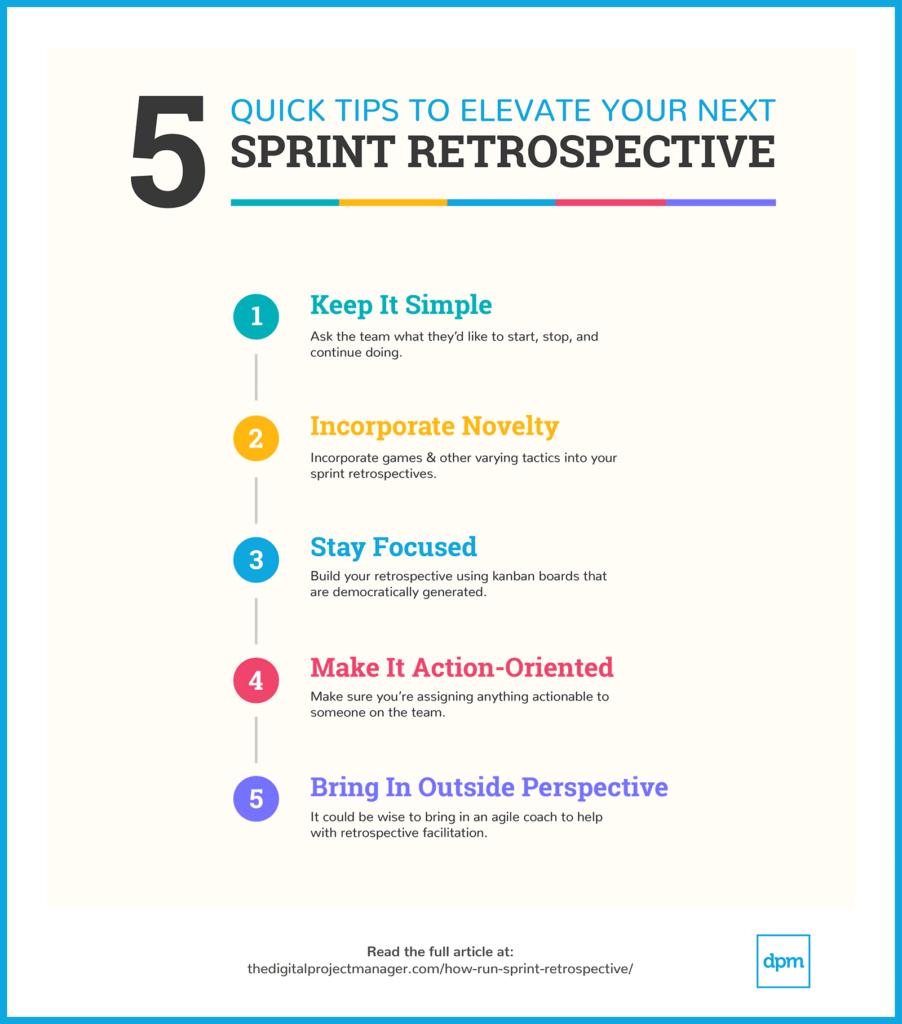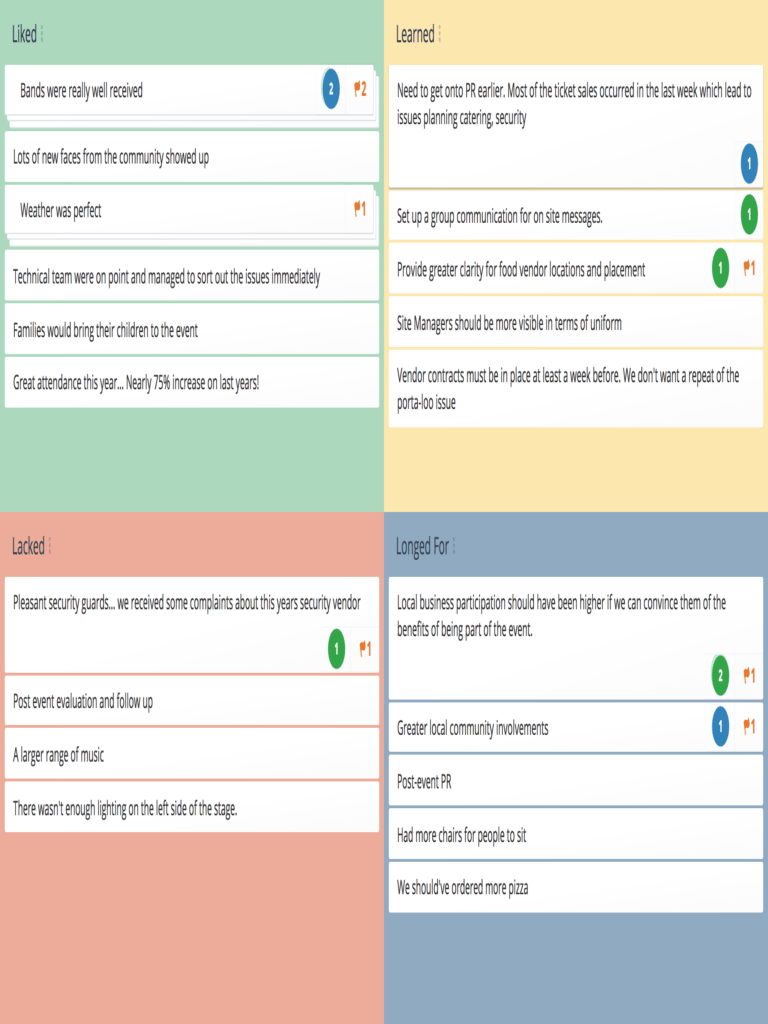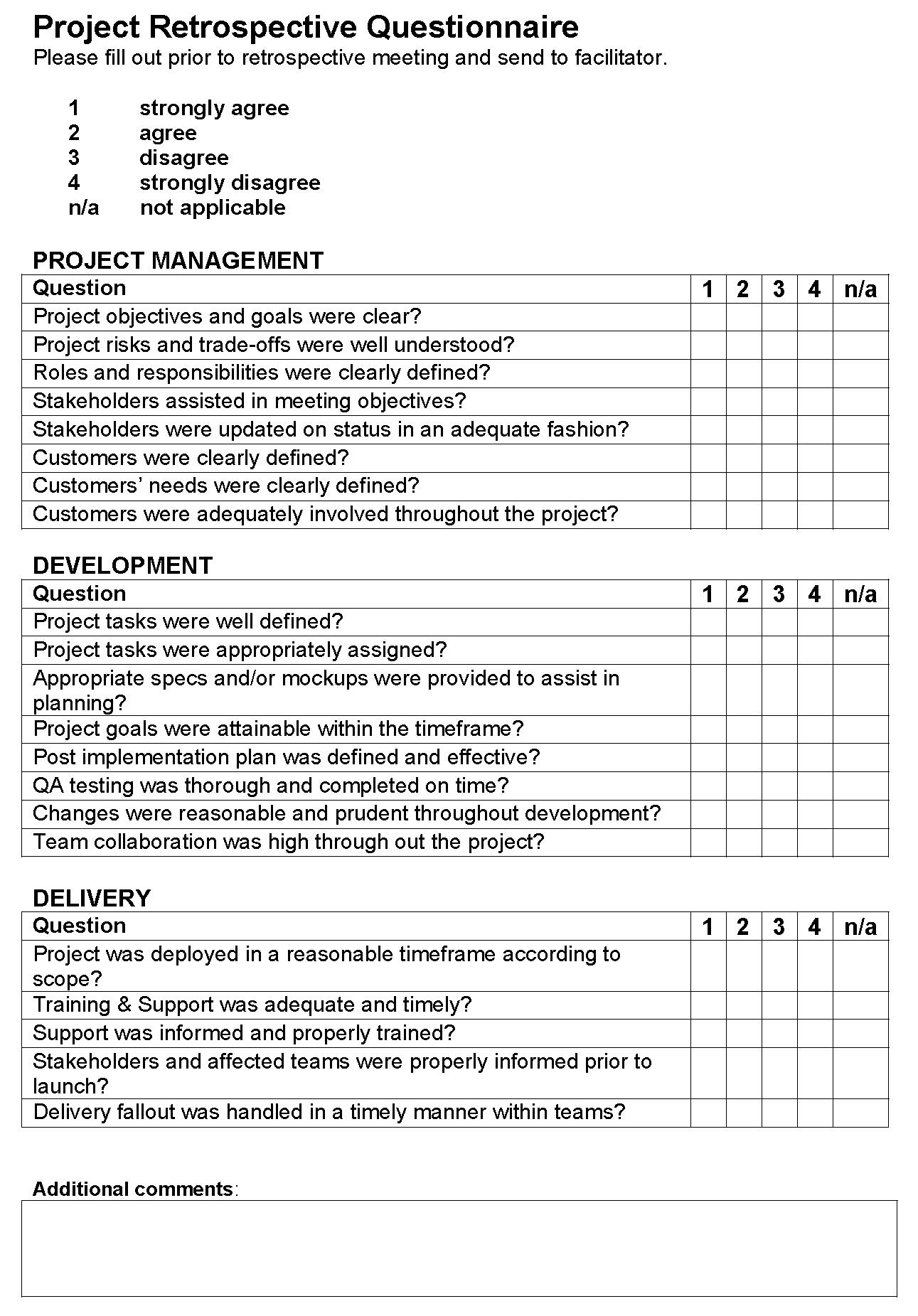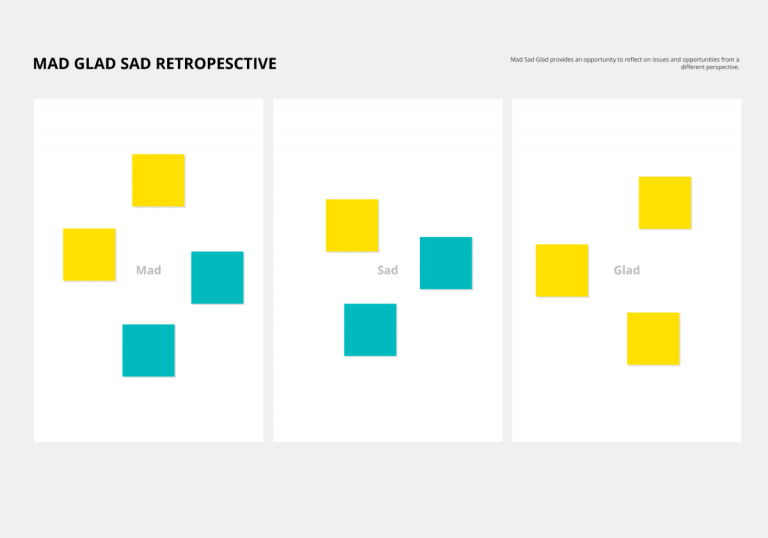
While the traditional retrospective focuses mainly on actionable tasks and how your team can transition actions into future projects, the emotive retrospective takes a closer look at how people felt about the previous project. If you only want to use one retrospective template, this is the one for you.
Project retrospective template how to#
This is a great forum for people to air their frustrations, walk through the steps of their last project, or begin a dialogue on how to best move forward. Specifically, our traditional retrospective takes a slightly different view to the “start, stop, continue” practice and thinks more about what went well, what went wrong, and actions that can be taken based on that feedback.

This doesn’t have to begin and end at tasks it can also include habits, meeting practices, or general organizational factors that either helped or hindered the overall ability of your team to conduct a successful sprint. This retrospective is very task-oriented and in order to find things that fit in each category you need to brainstorm the actionable tasks that went into the last project and analyze their efficacy. This is an easy way to understand this template, and the main principle behind this retrospective is finding things from your previous sprint that you want your team to start doing, stop doing, and continue doing. This version is also commonly referred to as the “start, stop, continue” retrospective. The first retrospective we’ll cover is the most traditional version of the retrospective analysis and it’s the one we have pre-made on Fresco. Below we will define, explain, and position 7 different retrospectives so, hopefully, you will have a better understanding of what they are and how to use them. Knowing that retrospectives share end goals and are meant to target different things, it can be confusing to understand which retrospective to use and how you should implement them to get the most out of your team. Retrospective templates take multiple different forms and can yield different results based on the specific structure that you choose, but they all share that same end goal. By analyzing your previous scenarios you can access the details of what went well and what should be avoided in the future. These templates target the optimization of future projects through the lens of past successes and failures.

Please get in touch if you have any questions or issues.Through any type of layout or structure, retrospective analyses usually share a common goal.

The wiki maintainer's personal guide to running effective retrospectivesĪ collection of quick tips to ensure you're getting the most from your retrospectives Lots of resources where you can learn more about retrospectivesĪ list of common problems that have occurred with retrospectives and suggestions on how to deal with them. Examples of use may be to break the ice, gauge the temperature or remind people of significant events. Smaller exercises and tools which can be used on their own or as part of larger sessions. You will need to request an account to do so, which will need to be approved by the administrator ( Sorry for the bureaucracy but the wiki gets hammered by spam bots!Ī constantly evolving list of retrospective plans you could try for either specific situations or to simply mix things up to stop them going stale.

If you've come up with a retrospective plan you think worked really well and is worth sharing, or have Tools or Tips & Tricks please share them here.
Project retrospective template software#
The process of retrospecting is at the heart of Scrum (Inspect and Adapt), eXtreme Programming (fix it when it breaks) and Lean Software Development (Kaizen or Continuous Improvement) " a meeting held by a project team at the end of a project or process (often after a certain number of iterations) to discuss what was successful about the project or time period covered by that retrospective, what could be improved, and how to incorporate the successes and improvements in future iterations or projects." - Wikipedia It is time specifically put aside to reflect on how the team is performing and what can be done to improve. Retrospectives play a crucial role in teams. This is a resource for sharing retrospective plans, tips & tricks, tools and ideas to help us get the most out of our retrospectives.


 0 kommentar(er)
0 kommentar(er)
